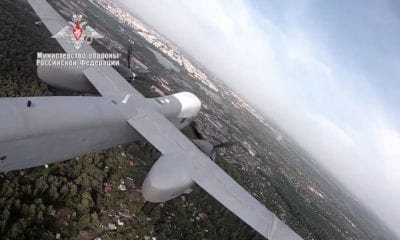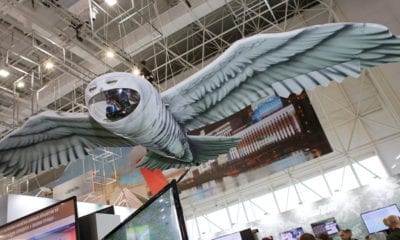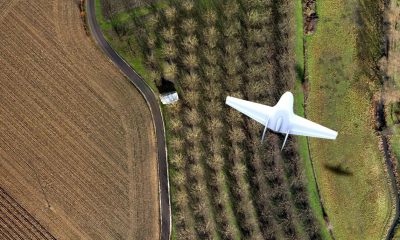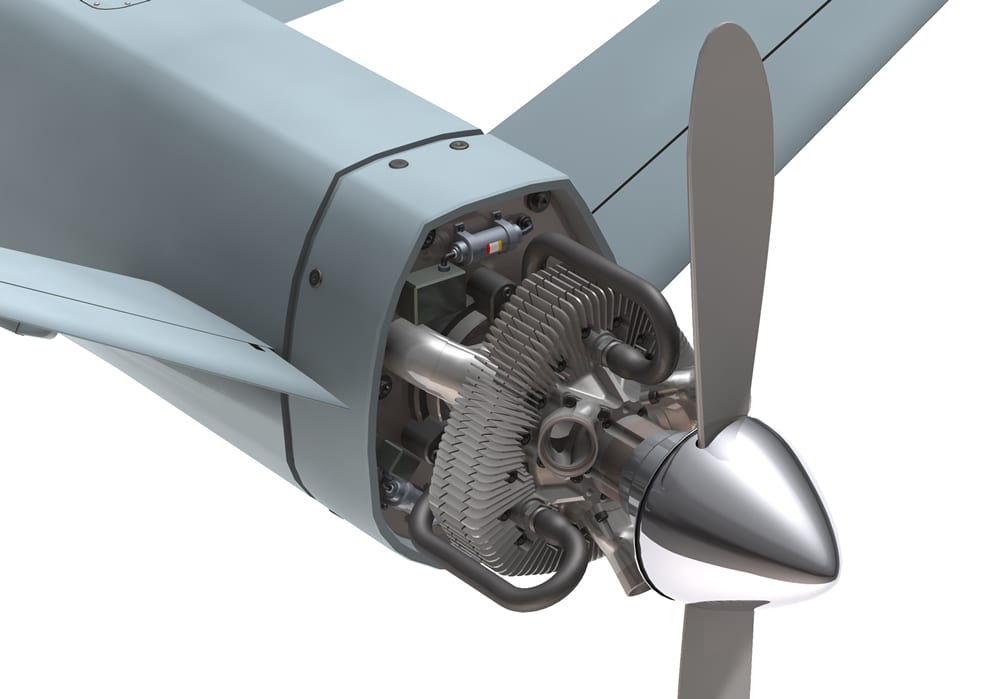
AI
DARPA Looks to Extend Range of Drones, Autonomous Vehicles with LiquidPiston: CEO, Alexander Shkolnik
LiquidPiston is revolutionizing next-generation engine development. The company, headquartered in Bloomfield, Conn., develops and licenses compact & efficient power solutions based on an optimized thermodynamic cycle and a new type of rotary engine architecture. According to the company their patented high-efficiency cycle is the biggest leap forward in combustion engine technology over the last 85 years.
This week the U.S. Defense Advanced Research Projects Agency (DARPA) awarded LiquidPiston an additional $2.5 million to continue development of its 30kW X4 rotary diesel engine prototype, bringing DARPA’s total funding of the engine technology to $6M. The company received this award after meeting the objectives for Phase I of the program, which had focused on the clean sheet design of the X4, and demonstrating the structural integrity of the new engine platform while operating under compression ignition of diesel fuel.
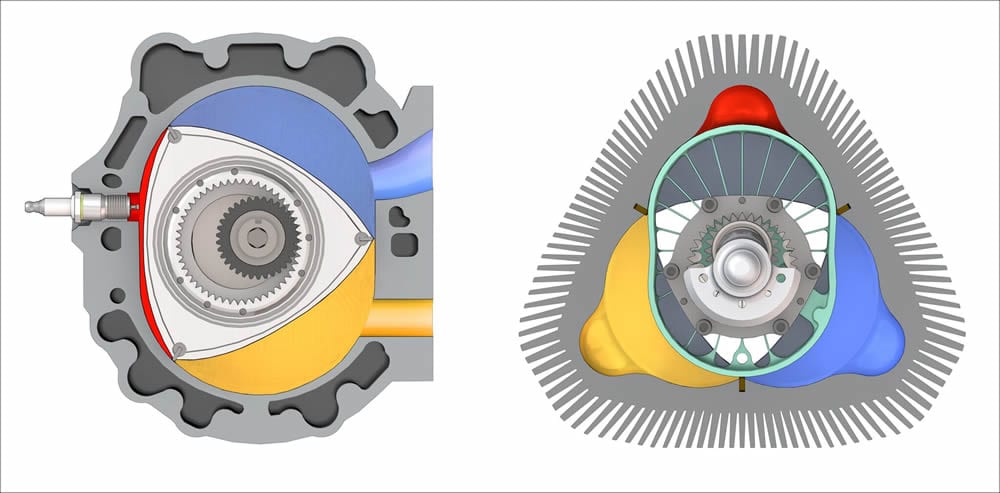
The objectives for the $2.5 million phase II of the program are demonstrating 30kW of power and reaching 45% net indicated fuel efficiency from the .75L X4 prototype. Development will be executed at LiquidPiston’s state-of-the-art dynamometer & engineering test facility in Connecticut. Phase II also lays a foundation for future work. When development of the fully packaged engine is complete, the 30kW X4 engine is expected to weigh just 30lbs and fit into a 10” box, while achieving 45% brake thermal efficiency – approximately an order of magnitude smaller and lighter than traditional piston diesel engines, and also 30% more efficient. The efficient, lightweight, and powerful rotary Diesel/JP-8 X4 engine offers a disruptive power solution for direct as well as hybrid electric propulsion and power generation.
“Exceeding DARPA’s objectives for the first phase of the program validates the potential for an entirely new category of military-grade, rotary diesel engines,” said Alexander Shkolnik, CEO and Founder of LiquidPiston. “In combustion testing, the X4 prototype handled peak cylinder pressures reaching 150 bar at a compression ratio of 26:1. This is the first time that a rotary engine has shown the capability to achieve true compression ignition at this ratio in a single stage of compression and without any supercharging. We’re excited to continue working with DARPA in demonstrating the power and efficiency capability of the X4, while identifying transition pathways for the technology within specific branches of the armed forces. We believe military forces’ advanced and autonomous air, sea and ground vehicles would benefit from a new power platform which is compact, lightweight and burns heavy fuels efficiently; and LiquidPiston technology could improve mission endurance and payload, or increase the mobility of higher power electric generators,” added Shkolnik. “Our novel cycle and rotary engine architecture promise dramatic performance improvements while also reducing engine heat signature and minimizing vibration impact on intelligence, surveillance, and reconnaissance equipment.”
LiquidPiston, CEO, Alexander Shkolnik kindly took time out of his busy schedule to field a few questions for us.
Hi Alexander, first of all great news on the additional funding. Following on from your news release, can you tell us what objectives were actually met in Phase I of the program?
The first phase was really broken into two parts. Our first objective was to prove the structural integrity of the LiquidPiston engine. With our smaller engine, the one that runs multi-fueled, that’s spark ignited, that engine was running at nine to one compression ratio and we were seeing 30, 35 bar of cylinder pressure, or chamber pressure.
Secondly, we actually designed and built the core of our new 40 horsepower engine, that we call the X4. We demonstrated that engine running up to a 26 to 1 compression ratio and targets were to show that the engine can run 110 bar of cylinder pressure.
We actually ran it up to 150 bar of cylinder pressure. That’s naturally aspirated, no boost, just pure compression ignition on diesel. To our knowledge that’s the first rotary engine that’s been able to achieve a true compression ignition with a single stage of compression.
Why is LiquidPiston moving into the drone / UAV arena?
Some of our engine’s core benefits are what the drone industry is looking for when it comes to powering group 2 and group 3 drones – especially with military applications.
Our X4 engine looks like an inverted Wankel rotary engine and solves a lot of the challenges the Wankel has with durability and efficiency. The Army’s RQ-7 Shadow currently uses a Wankel engine design and has had issues scattering the enemy due to the engine’s excessive noise.
Our engine is much quieter and could increase the Shadow’s flight time of four to nine hours, depending on payload and variation, by more than 50%. In addition, because the engine is thermally more efficient, less heat goes into the exhaust, so it will have a lower heat signature to bypass an enemy’s thermal imaging devices.
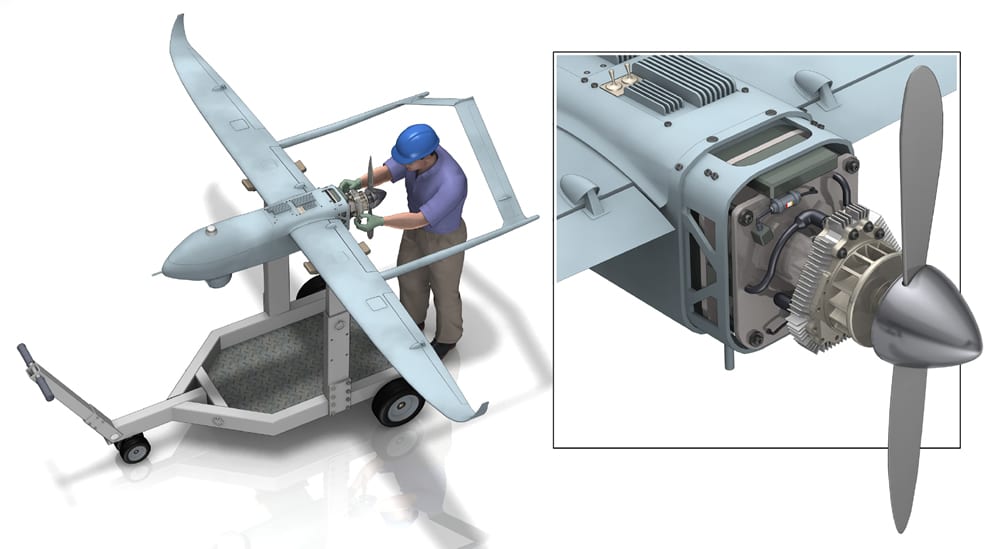
Why diesel over petrol?
The U.S. military runs on heavy fuels – mostly Kerosene based JP8. This fuel is very hard to ignite and it can sit in storage containers for a very long time without degrading. Diesel is a close comparison.
Will you be licensing the engine?
Yes, our business model is work with selected manufacturing partners to industrialize and manufacture our engine under license.
We expect that some manufacturing partners will be merchant suppliers of engines to multiple customer segments and some manufacturing partners may be supplier to 1 or more OEMs in a particular industry such as automotive or aviation.We will also provide engineering professional services to manufacturing and OEM partners.
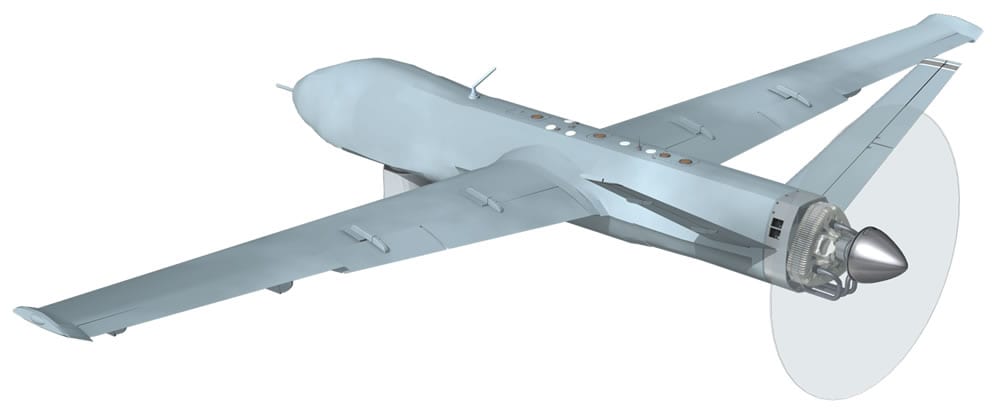
Where do you see the drone / UAV market in 5 years and how will LiquidPiston fit in?
The UAV space grows into a $50B-plus market by the mid-2020’s — largely driven by commercial and military use of group 2 and 3 drones. We believe LiquidPiston can become the go-to propulsion platform for this class of UAVs as they look for more efficient, reliable and longer range powering solutions.
What features or improvements on performance / accuracy might be in the pipeline for future models?
We have very aggressive targets with DARPA. We’re aiming to get to an end result where the engine weighs 30 to 40 pounds and has double the efficiency compared to other drone engines.
What other companies in your space excite or inspire you?
Felix Wankel’s innovative work in designing the first commercially viable rotary engine in the 1950’s to successfully compete with the piston engine platforms which had been in existence since the 1800’s is inspiring. It proves that disruptive innovation can succeed in the engine industry. In Wankel’s case, he created a rotary implementation of the Otto gasoline 4-stroke thermodynamic cycle which delivered greater power density and performance compared to the available piston gasoline engines. At LiquidPiston, we have developed and implemented an optimized thermodynamic cycle which is inherently more efficient than the Otto cycle and can burn diesel, jet fuel, and other fuels as well as gasoline, while providing power density which rivals or improves on the Wankel’s power density.
From a business model perspective, we are inspired by companies outside of the engine space, such as Dolby Labs, which have built highly-profitable $ Billion revenue companies by being domain experts, constantly innovating in their space, and licensing their technology and product platforms to integrators and OEMs while also providing technical professional services to those integrator and OEM partners.
Anything else you’d like to add?
While this specific announcement was tied to military applications of our engine platform, we really believe we can assist in pushing the boundaries of hybrid-electric powered commercial flight.
For instance, we believe it would be very natural to combine our engine technology with electric propulsion systems that Uber is looking at for its flying cars.
If you can fly for 20 minutes on a battery, then you can take out part of that battery and replace it with our generator. Our 40 horsepower generator should weigh on the order of 100 pounds or 150 pounds. 36 pounds of fuel can displace 2,000 pound of battery, right? So that’s a huge win, and batteries are nowhere close to the energy density of fuel.
So if you have an electric system that has a small battery and then you use a very compact, very efficient generator on board and take advantage of the energy density of fuel.
Electric-only UAV’s could also mean downtime and dead batteries. Think about this. My battery died on my cellphone and my phone was almost unusable. It’s an iPhone. My phone was less than two years old and the battery was like a brick. I replaced the battery and in six months I killed the battery again. And I’m charging my iPhone battery at maybe .6 c or something. It takes a couple hours to charge this battery.
Now think about what you’re going to do to the battery if you try to charge it at 4 c, which is what Uber is talking about. Five or six times faster than what you’re charging your iPhone at. You’re going to kill the life of these batteries very quickly and you need megawatts and megawatts of power delivered if you want to be charging multiple vehicles at the same time.
About Alexander Shkolnik

Alexander Shkolnik is a Co-Founder at LiquidPiston, Inc. Mr. Shkolnik is a co-inventor of the Liquid Piston engine. Mr. Shkolnik spent 5 years as the operations manager of a computer consulting company which built custom computer hardware, developed websites, and developed a remote camera monitoring system for employers. He has extensive experience modeling complex dynamic systems. He has co-authored six conference publications, one book chapter. Mr. Shkolnik is an NSF Research Fellow in Electrical Engineering and Computer Science, specializing in Robotics/Artificial Intelligence.

